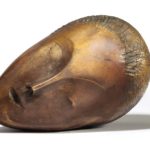PARIS.- How did Leonardo Da Vinci manage to paint such perfect faces? For the first time a quantitative chemical analysis has been done on seven paintings from the Louvre Museum (including the Mona Lisa) without extracting any samples. This shows the composition and thickness of each layer of material laid down by the painter. The results reveal that, in the case of glazes(1), thin layers of 1 to 2 micrometers have been applied. The study, led by the team of Philippe Walter, of the “Laboratoire du Centre de Recherche et de Restauration des Musées de France” (LC2RMF, CNRS/Ministère de la culture et de la communication), with the collaboration of the European Synchrotron Radiation Facility (ESRF) and the support of the Louvre Museum, is published the 15 of July 2010 in the journal Angewandte Chemie International Edition. Leonardo Da Vinci’s paintings fascinate, partly due to a range of subtle optical effects that blur outlines, soften transitions and blend shadows like s
Quantitative Chemical Analysis Sheds New Light on Leonardo Da Vinci’s Faces
Back To Top







